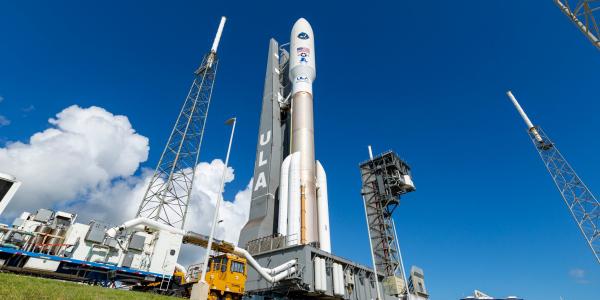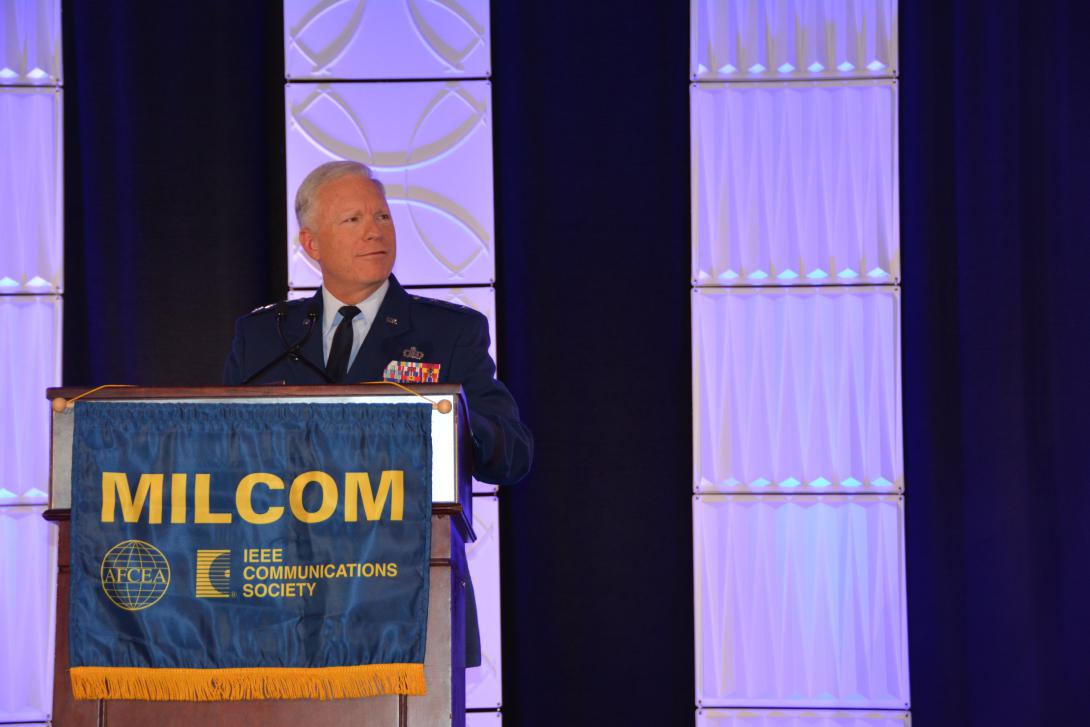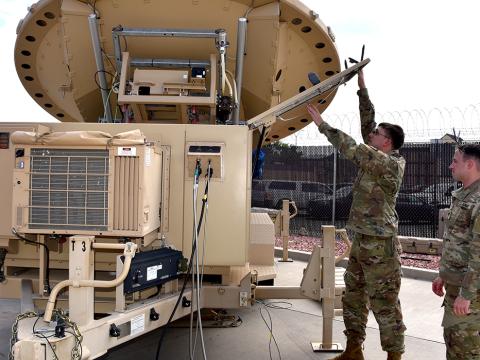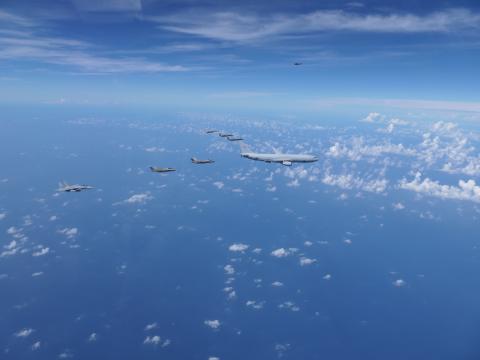The Air Force Restructures its Space and Missile Systems Center
Known as the SMC, the U.S. Air Force’s Space and Missile Systems Center, part of the service’s Space Command, is at the helm of the military’s satellite communications. Confronting a contested space environment and the need to innovate faster, the SMC is pursuing a reorganization involving its contracting and decision-making approaches to improve the nation’s defense-related satellite communications.
However, at the forefront of everyone’s minds is how the proposed Department of the Space Force would impact the U.S. Air Force, and in particular, the SMC. When asked how the proposed sixth branch of the military would affect the center, Lt. Gen. John Thompson, USAF, SMC’s commander, and commander of the Air Force Space Command, responded that the SMC offers extensive expertise regarding the military’s use of space.
“Regardless of whether or not we have a Space Force, we are going to need people and technologies that support space functions,” said Gen. Thompson. “At SMC, we have military and civilian employees with more than 30,000 work years of acquisition experience and the U.S. Space Force is going to need experts.”
Secretary of the Air Force Heather Wilson announced in September 2018 at the Air Force Association’s annual meeting that she was working with Air Force leaders and Joint Staff on a proposal to establish and support a unified combatant command for space. She also stated that in February she would be sending to Congress its related budget proposal for fiscal year 2020.
In the meantime, the SMC will pursue the overarching restructuring effort, dubbed SMC 2.0, Gen. Thompson said. The commander explained the SMC 2.0 approach during his keynote address at the MILCOM conference hosted by AFCEA International and the Institute of Electrical and Electronics Engineers (IEEE) in Los Angeles in October 2018.
The commander stressed that the United States is encountering a progressively more competitive and adversarial environment, including in space. The Air Force is facing a strategic inflection point in terms of how it will pursue satellite communications in such an increasingly contested, degraded or operationally limited space environment, he said.
“The Space and Missile Systems Center must adapt in order to maintain our nation’s superior space technical capabilities,” said Gen. Thompson. “That is what SMC 2.0 is all about. As a center, we’ve got to be more innovative. We’ve got to work better as an enterprise, and we have to be able to shift our cultural mindset. And above all, we’ve got to move faster to keep our adversaries backpedaling.”
A key part of SMC 2.0 is deploying agile, resilient and secure command, control, communications and computers (C4) space architecture. Ideally, that includes incorporating more modularity across various host platforms, including the service’s enterprise ground system and protective technical anti-jam satellite communications (SATCOM), known as PATS.
The SMC is working to define a hybrid flexible architecture for satellite systems to promote future interoperability. “There are ways to look at the architecture in order to leverage SATCOM and benefit from lower costs and schedules to find the right fit in the right threat environment,” Gen. Thompson said. “Not every satellite or satellite system, whether it’s communications or not, needs to have its own independent ground system. We need to do more things as an enterprise.”
Part of enabling flexibility means having open architecture standards that will outline development structures. The SMC is beginning the process of developing standards.
“These open architecture standards would allow you to then partner with international, with intergovernment, with commercial providers, because they’re using the same open architecture standards, so their architectures would fit in with yours,” stated Col. James Reynolds, USAF, senior materiel leader, Advanced Systems Division, Space Superiority Systems Directorate, SMC.
In addition, the standards would widen the field of providers, the colonel said. “[They] would allow you to bring in a lot of nontraditional [providers], while still maintaining the tight connection with our traditional industry partners,” he stated. “We can’t continue to build our space systems and our space capabilities in the way that we had built them traditionally. Space, like many other domains, is becoming more contested, more threatened, and we have to take action.”
The SMC also is pursuing the idea of multilayer SATCOM. “We have a lot of high-value assets largely at GEO [geostationary orbit],” Col. Reynolds pointed out. “It’s somewhat of an easy target for adversaries when we don’t have multiple layers and resiliency in that architecture. That’s what we’re working on to make sure that we have capabilities that not only exist in military-designed and military-fielded systems but also in commercial systems and taking advantage of other government partnerships either as an augmentation or in some cases as the actual main capability.” This includes leveraging low-Earth-orbit commercial constellations, he said.
Additionally, the SMC 2.0 strategy will target international partnerships to provide SATCOM. The renewed interest in partnering with allies to get satellite systems into orbit will help shoulder the cost burden, drive innovation and enable the U.S. military to meet its program needs faster, explained Col. Timothy M. McKenzie, USAF, senior materiel leader, division chief, Advanced Development Division, MILSATCOM Systems Directorate.
SMC 2.0 includes a new establishment to support that priority. “We have a new partnership office here at SMC that is going out and actively trying to find those opportunities for us,” explained Col. McKenzie. “It will be a big part of where we go in the future.”
Other future partnerships could involve allies already partnering in Protected SATCOM that also may be interested in the Protected Tactical Services field demonstration or the Protected Tactical Waveform, Col. McKenzie said. The United Kingdom, Australia, Luxembourg, Japan and Canada could be payload hosts for Protected Tactical SATCOM. For the Evolved Strategic SATCOM effort, current Advanced Extremely High Frequency (AEHF) international partners are interested in participating, but they are waiting on more information to build business cases, the colonel noted.
“All of the protected SATCOM work we have going on, all those same allies you saw in WGS [Wideband Global SATCOM] and Advanced EHF, they are all interested in and are tracking what we’re doing and where we’re going,” Col. McKenzie explained.
Regarding Norway’s Arctic military satellite communication (MILSATCOM) efforts, the Air Force expects to sign a memorandum of understanding this month to participate in the project. The associated Space Norway system would launch in 2022, and the United States would integrate two of its Enhanced Polar System payloads onto the Norwegian system with a commercial U.S. launch. The colonel suggested the effort could save the Air Force $900 million.
The United States also will be a NATO SATCOM provider, a measure that Deputy Secretary of Defense Patrick Shanahan will direct and that will provide capability from the AEHF, WGS and Mobile User Objective System, Col. McKenzie stated.
As part of that effort, the United States entered into a quadrilateral consortium with Great Britain, France and Italy. Dana Deasy, the Defense Department’s chief information officer, is leading the effort for the United States with support from the services. The Air Force expects a memorandum of understanding to be signed by the end of this year, with service scheduled to commence in 2020 and extending through 2035, the colonel said.
“We’re putting a proposal together to use our government assets to support NATO,” Col. McKenzie said. As part of the effort, the MILSATCOM Directorate is developing standards for the NATO SATCOM.
The colonel also said the directorate has been in talks with Luxembourg, which is building a medium-Earth-orbit SATCOM system. “We’ve been in discussions with them to find out what those opportunities are and how we might use that system,” he reported. The Japanese Aerospace Exploration Agency also offers a partnership opportunity with the United States as far as improved space situational awareness (SSA) and SSA data sharing.
Col. McKenzie also mentioned that the U.S. Pacific Command has indicated a need for more SATCOM, which the command would like to pursue through multinational agreements.
In addition, the SMC may look to international partnerships to provide X-band capability. For the Navy, use of satellite-based X-band frequency is a vital defense component, which will extend well into the future. However, the Air Force doesn’t yet have a long-term plan on how it will provide that frequency. “We need to figure out what we are doing with X-band,” Col. McKenzie noted.
There are several possible ways to pursue it, the colonel suggested, “whether it’s an international partnership for X-band, whether we can buy it as a service or whether we do it exactly the way we’re doing it today,” he said. “We’re talking about all those opportunities.” The colonel said that the MILSATCOM office had started a conversation with the United Kingdom about potentially using its system known as SkyNet “sometime in the future” for X-Band.





Comments